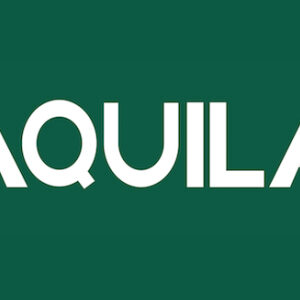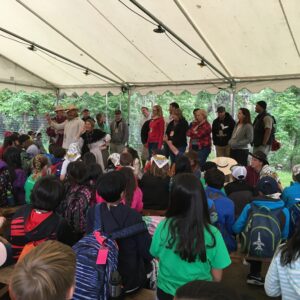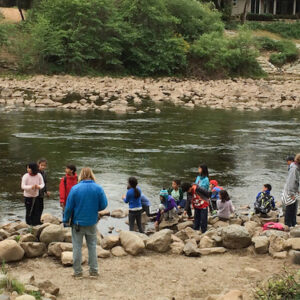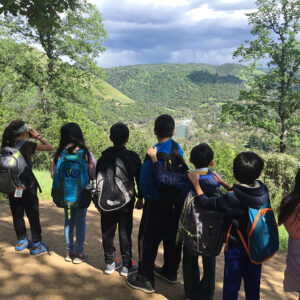Reading historical text about the California Gold Rush is one thing … experiencing what it might have been like first-hand quite another.
During several action packed spring days in Coloma, Harker’s grade 4 class had the unique opportunity to live the legendary life of a gold digger. This past spring, the students ventured to Coloma, located near Sacramento and most noted for being the site where gold was first discovered back in 1848, leading to the California Gold Rush. Today, Coloma is a designated national historic landmark district and tourist attraction best known for its ghost town and Marshall Gold Discovery State Historic Park.
According to Kristin Giammona, elementary school head, initial rain showers on day one didn’t deter the excited Harker students from hiking five miles on the area’s Monroe Ridge, armed with ponchos, rain jackets, “smiles, songs and lots of learning.”
After the rain cleared, students had a blast making cornbread, building a shelter and panning for gold. They even had a hoedown under a huge tent, warmed by a campfire alongside the breathtaking American River.
Following the evening’s fun skits, performed by both teachers and children, was a surprise visit from a special guest, a Native American who informed them that the name Coloma comes from the original natives name for the surrounding valley: Cullumah, meaning “beautiful.” In fact, Coloma is located on the south fork of the American River that runs through the valley and was built on an original Native American village.
These days, the small town has only several hundred inhabitants, mainly consisting of hopeful modern-day miners who pan the American River, and others who run the museums and tours in the area. In fact, Coloma’s economy is largely based on money generated from its museums and students like Harker’s fourth graders, who take field trips with their schools to learn about the California Gold Rush.










